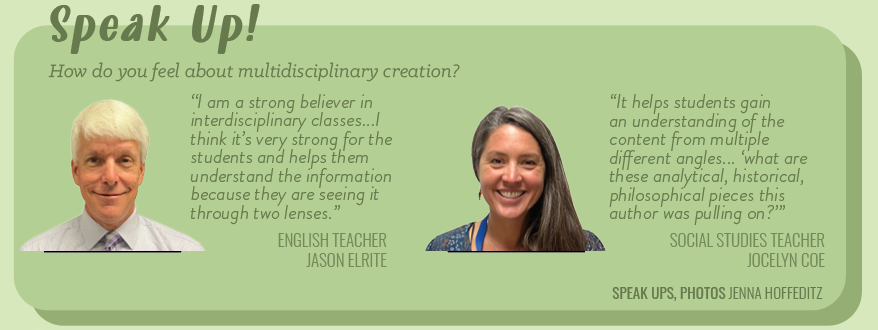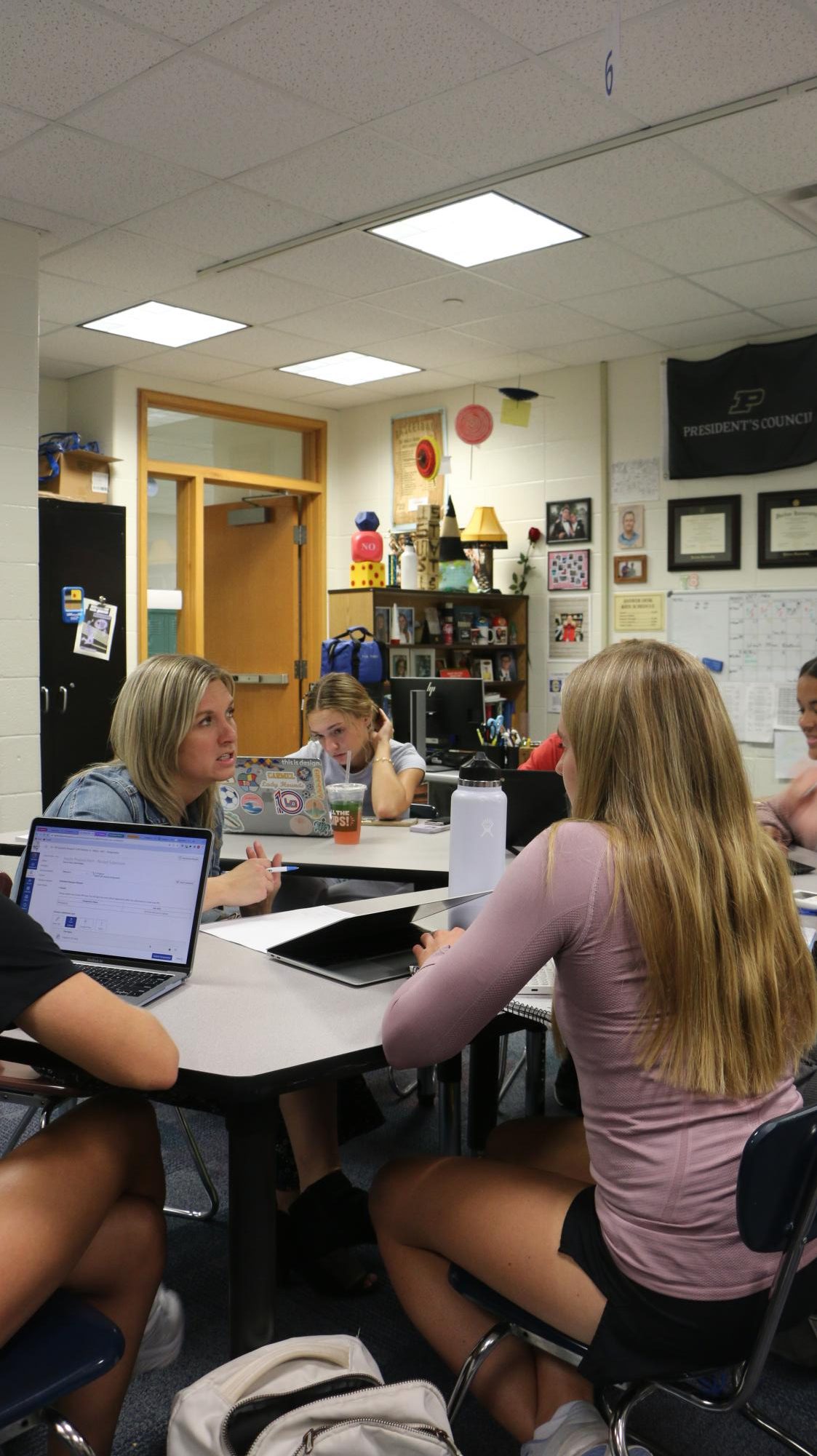Senior Krishay Arora swings his tennis racquet at practice, the ball flying and ricocheting onto the hard concrete surface. His legs move and his eyes follow the ball as the cameras on the tennis court film his every move. These cameras, however, are not just for show according to Arora. As a student who takes the AP Research/Statistics block course, Arora said his research topic was inspired by his biggest passion: tennis.
“I am writing my research paper on video analysis in tennis and how that impacts coaching and leads to improvement in tennis players,” he said. “We have cameras set up during our practices so that actually helped me come up with my research topic. It made me wonder what impacts those cameras even have. Is it leading to improvement or is it just for show?”
Not only did tennis help him narrow down his research topic, but Arora said it also helps with the data collection process.
“Even when I’m collecting data, since I’m a part of the team I know what variables coaches are looking for in a good tennis player and what they want players to improve on when they’re playing tennis,” he said. “So when I am analyzing my data, there will be certain traits I will be looking for. I feel like being part of the tennis team really helps me narrow those variables down.”
 Arora is far from the only student at this school who combines different skill sets and knowledge to aid in his creative processes. The trend of being multidisciplinary—combining or involving several different disciplines to approach a problem—has arisen as students are becoming more involved in their various academic interests and extracurricular activities.
Arora is far from the only student at this school who combines different skill sets and knowledge to aid in his creative processes. The trend of being multidisciplinary—combining or involving several different disciplines to approach a problem—has arisen as students are becoming more involved in their various academic interests and extracurricular activities.
AP Statistics teacher Matthew Wernke said the AP Research/Statistics block class was created to help students achieve these multidisciplinary skills.
“We offered (the class) because when they first started research 10 years ago, the students would come to me and say I’m collecting data but I don’t know what to do with it,” he said. “The research side leads them through a lot of the important procedural ideas of how to do research. You have to be able to identify a question, come up with a way to answer that question. But at some point they’re going to gather data to answer that question. And English teachers are not trained to take over that. It’s not their area of expertise. So they started coming to me as a stats teacher asking: What do I do with my data? How do I answer this question numerically with the information I have? So after a few years of that, (English teacher Allison) Malloy and I talked and said maybe we should combine the statistics and research class.”
Wernke also said combining two different skill sets allows for creativity to spark.
“When I hear ‘multidisciplinary’ it’s where we’re starting to combine lots of areas of a student’s education together,” he said. “For a kid to say, ‘I’ve been learning how to write a paper.’ And then also to say ‘I’ve been learning how to write questions. How do I write a paper that involves information with numbers and analyzing it?’ It merges things together. I think we’d all learn better if we saw that connection of a block class more than having seven classes with no overlap. You could say when you’re in science class you’re doing statistics and math, but we don’t build it that way. We keep them disconnected. The multidisciplinary approach helps students connect dots and form stronger connections.”
Arora said he agreed with Wernke and said statistics will greatly aid in his entire research process.
“Statistics is such a prevalent tool in any research paper really,” he said. “It helps justify your claim, it helps justify your evidence and it tells you whether your experiment succeeded or failed in proving something. I’m just glad it’s something I have in my arsenal during my research process.”
Sophomore Oliv Wadjaja is another student who is involved with activities outside of academics. Playing piano for 11 years and being a member of several clubs including DECA, A Kid Again and the House of Representatives, Wadjaja is involved in many extracurricular activities. She said being multidisciplinary in this regard has helped with the development of time management.
“I manage to balance all of this by using time management,” she said. “Just trying to be efficient as I work in my classes and also my extracurriculars. Without time management, it would be disorganized and I couldn’t get as many things done.”

AP Research teacher Allison Malloy assists her students with their projects. Malloy said she enjoys teaching this course as it is very multifaceted. “The real world is so interdisciplinary, so it’s a great thing to have more (multidisciplinary courses),” she said.
She also said being involved in many activities has helped her in understanding unique perspectives from a variety of people.
“As a whole, I’ve met a huge variety of people from the different types of disciplines I’m involved in,” she said. “I think it helps give me different perspectives. I get to see how different people think. For example, it helps when I write a paper because I’m so used to seeing all of these unique perspectives I encounter.”
Malloy, who also teaches AP Research, said she agreed with Wadjaja and said merging multiple disciplines results in various benefits.
“It’s a way of merging two things,” Malloy said. “I think the biggest way I would think of (multidisciplinary creation) is that idea of it being interdependent. Like the two classes become better because they’re molded together. And separately, even though they can be strong, they’re stronger together. The idea of multidisciplinary creation is the result of bringing two things together and transforming them into something better.”
Malloy also said many aspects of life require multiple disciplines.
“When we put two courses together, what we’re asking students to do is not just know things but to transfer it between different disciplines and see how it interacts in the real world,” she said. “Nowhere in the real world is it only going to be one subject. English itself is throughout every content. If someone wants to be a chef, it’s likely that they have to speak about what they’re cooking or have to write about it to propose a menu. The real world is so interdisciplinary, so it’s a great thing to have more (multidisciplinary courses).”
For Wadjaja, having multiple disciplines helps her be self-reliant and confident in her own skills.
“It’s important not to be one-dimensional,” she said. “Being involved in different disciplines just gives you so many different skills. It helps you be independent and self-sufficient. Multiple disciplines give you your own knowledge base.”
For his part, Arora will continue to play tennis for the tennis team here. However, he said he will continue to take the skills he learned and apply them to disciplines outside of the court.
“It is important for students to be engaged in multidisciplinary activities, like pairing academics and extracurriculars,” he said. “Tennis and academics are obviously different, but I believe they develop similar skills that sort of complement each other. I think combining academics with what you’re passionate about could create something quite spectacular.”

